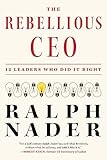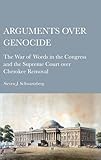Section 1: Analysis of Israeli Zionist Racism [Continuation]
E: A view by Human Rights Watch/
UN Human Rights Committee
We have no illusion about the New York-based Human Right Watch: despite its multiple efforts to depict itself as an independent organization and despite that vibrant name it gave to itself, the Zionist-infiltrated and western biased HRW is a cultural and media organ of US imperialism that divulges American imperialist propaganda under countless subterfuges and rhetorical semantics. Nevertheless, the extract we are about to mention is significant because HRW did not play with the basic facts since to report them was the UN Human Rights Committee.
Curiously, since both the UN Human Rights Committee and HRW are politically controlled by the United States, neither organization dared to name episodes that are synonymous with and reflect racism as such, but limited themselves to call the collective racist measures enacted by Israel as: “discrimination.” Discrimination, however, is a weak denomination for certain civic practices that are not necessarily racist. In addition, to dilute the issue of Israel’s open racism and equate between occupiers and occupied, both organizations cited human rights violations by the so-called, “Palestinian Authority”. Why put Israeli racism and violations by the PA at par?
In replying to this question, we have to note first our opposition to the PA acting on behalf of the Israeli occupation since this “authority” has become, de facto, a full partner with the Israeli regime to suppress the aspirations of the Palestinian people that democratically disempowered it through a fair election. Second, accrediting this PA with independent domestic policy “under occupation” is a preposterous attempt to confound the issue, as who is really exercising human rights violations in Palestine? It is all too obvious that while Israel is manifestly engaging in patent collective racism against the Palestinians, the PA — illegitimate by force of the 2006 Palestinian election — is trying to survive as a nominal “personal” authority enjoying benefits and privileges by intimidating all those Palestinians who oppose its compromising/capitulating policies with the supremacist Zionist state. But, emphatically, the PA’s practices do not share any trait with those of Israel: for example, we have never witnessed that the PA demolished houses over their occupants or attacked refugee camps with bulldozers and artillery!
Now back to the issue, under the title “Human Rights Development” Human Rights Watch writes,
The 1992 Basic Law: Human Dignity and Liberty, Israel’s main law addressing human rights, defined Israel as a religious state and did not prohibit discrimination or guarantee equality before the law. Many laws and practices openly discriminated against ethnic and religious minorities and against women on issues ranging from housing and employment to personal status. Israeli law did not guarantee freedom of religion, and as of mid-October, Israel had still not fully implemented a two-year-old law allowing civil burial, and had no provisions for civil marriage. On May 20, a Knesset bill providing for a three-year prison sentence or NIS 50,000 (US$13,700) fine for “preaching with the intent of causing another person to change his religion” passed its first reading.
The UN Human Rights Committee concluded in July that discrimination against Palestinian citizens of Israel had produced “significantly lower levels of education, access to health care, [and] access to housing, land and employment” compared to Jewish Israelis. According to the Legal Center for Arab Minority Rights in Israel (Adalah), the police response to demonstrations in September against Israel’s confiscation of Palestinian citizens’ land near Um al-Fahm left 400 injured, some by live ammunition. Deputy Commander Elihu Ben-On explained the police actions, telling reporters, “In the territories it’s common in such situations to fire live munitions with intent to harm.” In July, the interior ministry acknowledged that from 1984 to 1990 Israel had revoked Palestinian women’s Israeli citizenship if they married non-citizen Palestinians and lived with them in the occupied territories or Jordan.
Israel revoked permanent residency permits of Palestinian residents of East Jerusalem who could not produce the many documents required to prove that their “center of life” was within Jerusalem municipal boundaries. According to interior ministry officials, 1,641 Palestinians and their families lost their right to reside in Jerusalem between 1996, when the policy began, and August 1998. Five hundred other cases were under review. Individuals who lost residency rights also lost health insurance and social benefits, and risked being barred from reentering Jerusalem. [Compare the treatment of Israeli Palestinians to Jews who have no familial connection to Israel, have never resided in or visited Israel and yet these foreign Jews have a permanent right to Israeli citizenship and residency. — KP & BJS]
Workers’ groups like the Tel Aviv-based Kav La’Oved/Workers’ Hotline continued to criticize government labor policies which left foreign and Palestinian workers vulnerable to exploitation by employers and labor contractors. In March, Labor Minister Eli Yishai announced plans to reduce the number of foreign workers in the labor force from 10 percent to one percent by 2005, replacing them with Palestinian workers from the West Bank and Gaza Strip. The number of foreign workers had significantly increased after 1993 when Israel severely limited West Bank and Gaza Palestinians’ access to Israel and East Jerusalem. Yishai promised to increase deportations of unregistered workers to up to 2,000 per month and reduce processing of deportation orders to “about ten days.” Israel jailed migrants pending deportation, and workers who could not pay their repatriation costs sometimes spent up to six months in prison, without judicial oversight, awaiting deportation.
Israel exercised full or partial control over 97 percent of the West Bank and 40 percent of the Gaza Strip, while the Palestinian Authority (PA), established in 1994 pursuant to the Oslo Accords, had full control over the rest. Although most Palestinians lived in areas under some degree of PA control, Israel exercised extensive control over the freedom of movement of all West Bank and Gaza Strip Palestinians, impeding the exercise of those rights dependant on freedom of movement.
Israel had barred Palestinians living in the West Bank and Gaza Strip who lacked hard-to-obtain permits from entering or transiting through Israel or East Jerusalem since March 1993. The closure obstructed Palestinian economic activity and access to health care, schools and universities, places of worship, and family members in other parts of the territories or in Israeli prisons. Despite Israeli claims that closure was a justified security measure, the arbitrary nature of the procedures and criteria for issuing permits and the policy’s imposition in an indiscriminate fashion on an entire population made it an act of collective punishment.
Roadblocks used to enforce closure were a frequent point of friction, leading to several deaths and numerous injuries. Two Palestinian infants died during a closure and curfew imposed on Hebron in August, after soldiers blocked their mothers from reaching hospitals. The Israeli Defense Force (IDF) characterized the deaths as the result of “wrong judgment” and “an unfortunate misunderstanding.” Even when IDF regulations were followed, the closure policy sometimes resulted in deaths, as when three Palestinian workers were killed and six others wounded on March 10 at a roadblock at Tarqumiya. Soldiers fired on their van after it went out of control, apparently because of a mechanical failure. General Uzi Dayan, then head of the army’s Central Command, told reporters “During the two years that I have had this assignment, no soldier has been brought to trial because of events that occurred when he was in the field,” and in May a military prosecutor closed the investigation without bringing charges.Despite rules of engagement intended to minimize civilian injuries, the IDF and border police were implicated in at least twelve other deaths and numerous injuries during the first ten months of the year. On May 14, five Palestinians were killed and as many as 300 wounded, some seriously, by soldiers using live ammunition and rubber-coated bullets to disperse demonstrations in the West Bank and Gaza. According to the Gaza-based Palestinian Center for Human Rights (PCHR), forty-six of the seventy-one Palestinians injured in Gaza that day were shot with live ammunition, and fifty-two were shot in the upper body.
As of mid-October Israel had not released the bodies of ‘Adel ‘Awadallah, thirty-one, and his brother, ‘Imad ‘Awadallah, twenty-seven, killed by a police special forces unit on September 10. Both were wanted by Israel for suspected activities with the armed wing of the militant Islamic Resistance Movement, HAMAS. The exact circumstances of the killings remained unclear, and Israel refused requests for an independent forensic investigation. ‘Imad had been in PA custody from March 29 to August 15, when he was reported to have escaped from an unlocked cell. Brig. Gen. Yitzhak Eitan responded to early questions about whether the men had an opportunity to surrender, saying “What do you want me to do? Knock on the door?” West Bank commander Major General Moshe Yaalon later denied charges by PA chief of intelligence Amin al-Hindi and others that the two had been assassinated, saying “They tried to shoot the [police] dogs and our men killed them.” [Insinuation: in the eyes of Israeli Jews, a Palestinian life is worth less than a dog’s life. — KP & BJS]
As of August, more than 3,000 Palestinians from the West Bank and Gaza Strip were held in Israeli prisons, in violation of the Fourth Geneva Convention. Almost 1,400 were serving life sentences. Many were held in poor conditions with inadequate health care. In addition to these prisoners, as of mid-September at least fifty-three other persons were held as administrative detainees under similar conditions. Many had been held for years, without charge or trial and without effective judicial review of their detention. The Supreme Court ruled in November 1997 that administrative detention could be used to hold Lebanese nationals as “bargaining chips”—in effect, hostages—even though the detainees were not themselves a threat to state security. The longest-held administrative detainee, Ahmad Qatamesh, was released on April 15, after being held almost six years without charge.
Torture or ill-treatment during interrogation by the General Security Services (GSS) continued to be widespread and systematic. In January and May a nine-member panel of the Supreme Court heard arguments on GSS interrogation methods, but postponed ruling on whether these methods constituted torture under Israeli law, although the U.N. found them to violate two treaties prohibiting torture (see below). The Knesset also debated legislation that would codify these methods in a new GSS Law, in effect legalizing torture, but as of October the bill had not passed its final reading.
Israel’s demolition of Palestinian homes built without permits continued around Israeli installations in the West Bank including East Jerusalem, displacing hundreds. Building permits were almost impossible for Palestinians to obtain, and according to Israeli officials as many as three thousand homes in the West Bank could be subject to demolition. At the same time Israel targeted Palestinian homes for destruction, Israel authorized massive housing construction, tax incentives, and roads and related infrastructure for Jewish settlements in the West Bank, including East Jerusalem. Government approval of new construction often immediately followed attacks by Palestinians on settlers, as in the decision in August to expand the Yitzhar and Tel Rumeida settlements, and to allot NIS 90 million to build new settlements and expand existing ones. In response to a survey in August by Peace Now that found 5,892 new units under construction in 142 settlements, while 2,888 completed units stood empty, the Housing Ministry admitted that almost a quarter of all units built by the government in the West Bank between 1989 and 1992 had never been occupied.
Israel pressured the Palestinian Authority (PA) to extradite to it approximately thirty-six “suspects and defendants” as a condition of progress in Oslo Accord negotiations. The transfer of persons protected by the Geneva Conventions to the territory of an occupying power is illegal, and extradition to a state where there is substantial risk of torture is prohibited by the Convention against Torture, which Israel has ratified.
How can we interpret such report? For instance, while resisting occupiers is a right enshrined in the basic fabric of humanity, Israel wants the PA to hand over such resisters that it calls “suspects and defendant”. The question is: what are the “suspects” suspected of, and what are these charges against these “defendants”? In the US history of black slavery, if a slave escapes from his owner and someone shelters the escapee, this someone has to return the slave to his “rightful owner”; so does Israel want the resisters (enslaved by occupation) back as owned objects or as a bargaining chip with a PA that gave away everything and got nothing in return? Does the UN or HRW contemplate the situation under the slavery paradigm?
We believe that people (who claim to be genuinely concerned about human rights) need to scrutinize the words, actions, and motivations of self-professed human rights organizations. One should regard with utmost skepticism the desire to a balanced human rights picture. When a violent situation is between balanced sides and where no side has an upper hand on the other side, then we would clearly expect a balance in reporting. However, when a self-professed human rights organization, like HRW, attempts to draw an equivalency between an occupier and the occupied, the victimizer and the victims, the exploiter and the exploited, then critical thinkers should take umbrage at such Zionist, imperialist, corporatist deceit. Human rights organizations have no rights whatsoever to stymie the victims of racism from the right of self-defense. And they have no right, whatsoever, to usurp the right of oppressed and occupied peoples to resist oppression and occupation.
Clearly, in historical Palestine the preponderant means of violence are with the Zionists. The Zionists are also the dispossessors, colonialists, occupiers, and oppressors. The Palestinians have every right to defend themselves from further aggression against them and to resist the crimes wreaked upon them. A human rights organization that does not acknowledge these moral principles is but a tool of the violators of human rights.










